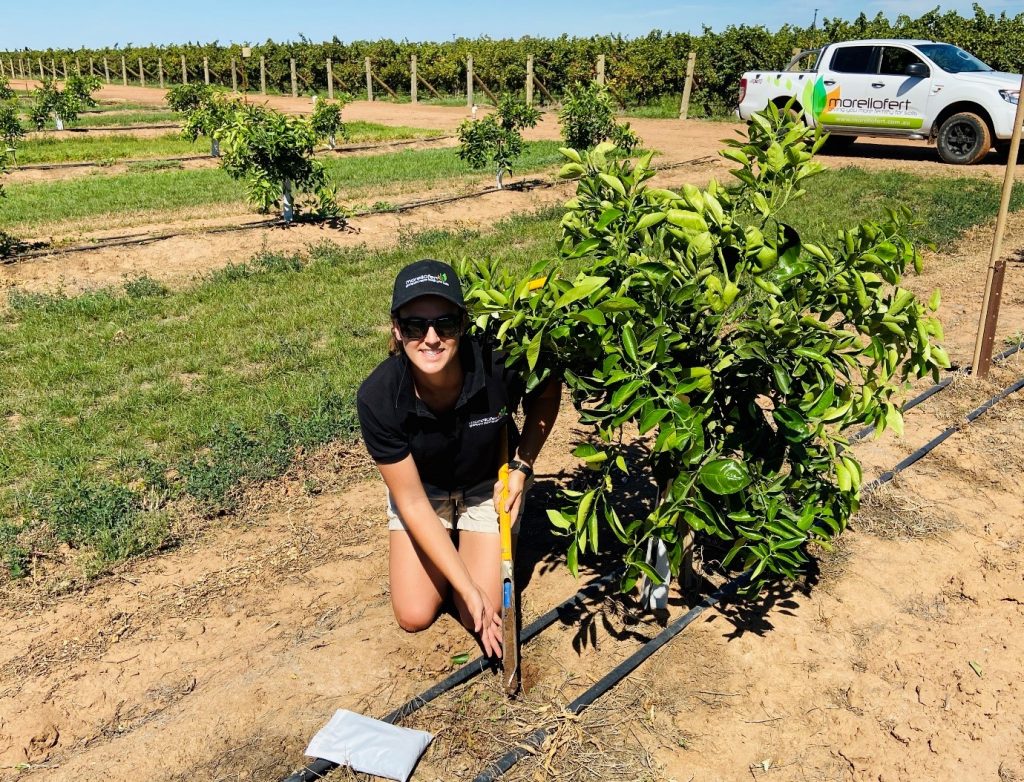In irrigated horticulture it is essential to understand soil characteristics. It allows growers to maximise the efficiency of irrigation system design and to support crop type selection.
It’s also important to understand the difference between different soil survey and soil analysis techniques so the appropriate method can be chosen.
In the Mallee, soil pit surveys are the first step in any irrigation development. A series of backhoe pits are dug throughout a property at a 75 x 75m spacing at a depth of at least 1.5m.
Surveyors will assess the fully exposed soil profile to determine layer depth and field texture, colour, carbonate content, soil structure, effective rooting depth, depth of water tables, pH and salinity.
A soil pit survey will provide information on readily available water, crop suitability under current soil conditions, soil amelioration recommendations, crop potential (once ameliorated), suggested irrigation management units, and erosion and drainage risk.
Soil pit surveys are a long-term investment; a valuable reference for current and future developments.
Electromagnetic Induction (EM) survey measures the electrical conductivity of soil. It does this by creating a magnetic field which interacts with the soil. The interaction with particles in the soil creates a secondary magnetic field which is measured by a receiver to give an apparent conductivity (ECa) reading.
Factors which affect the reading include salinity, water, clay content, and other factors like bulk density.
EM surveys are relatively quick and easy to undertake and measure soil attributes at a higher resolution than pit surveys. This means they can be undertaken repeatedly to monitor sites throughout time. EM surveys are often used for salinity mapping in broadacre irrigated agriculture but can also been used to measure other soil attributes.
They are highly location specific and must be calibrated using information from soil pits and soil samples to properly understand the characteristics which influence readings. Relying on EM alone without appropriate soil profile description and analysis is not recommended.

Image: Soil samples in a young orchard should be taken in the tree row. (Image courtesy of Talitha Gollan, Morellofert)
Soil sampling analysis is used to estimate the ability of soils to provide mineral nutrients to plants and is used as an indicator of soil fertility. Soil samples should be taken throughout a block from the topsoil and subsoil and sent to an accredited laboratory for analysis. The sampling pattern will differ in planted and unplanted sites, a more detailed description is given in this factsheet.
A soil analysis can help to diagnose poor plant performance, guide fertiliser regimes and ameliorate soil constraints which can limit nutrient availability. Sap and leaf tissue analysis are necessary to understand the nutrient status of plants and enhance the accuracy of nutrient programs.
For further information about soil surveys and soil analysis see this factsheet.



